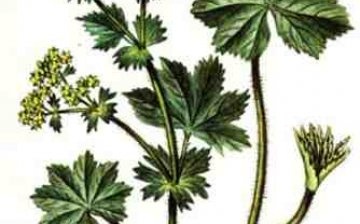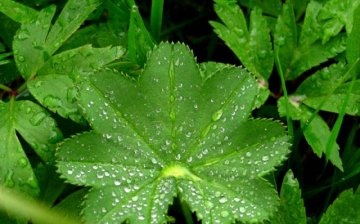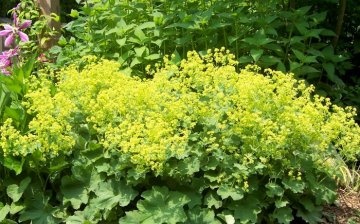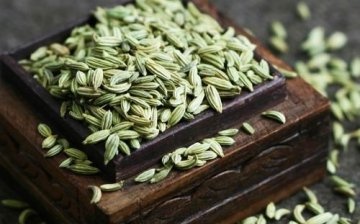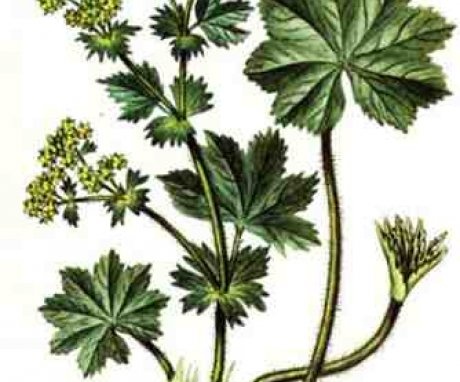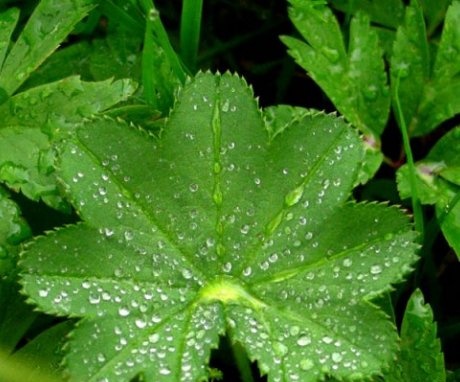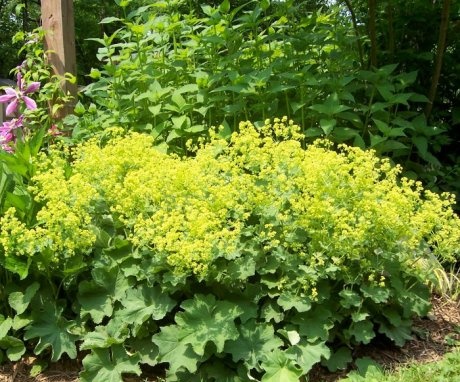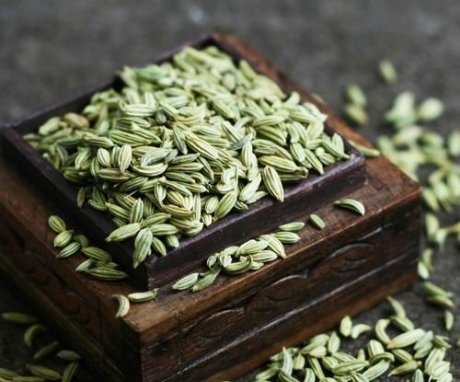All the secrets of growing grass cuff
The cuff is a perennial plant of the Rosaceae family. It has many names, two of them are yellow-green cuff and ordinary cuff.
Content:
General information about grass cuff
Its stems are erect, creeping, up to 50 cm high, sometimes bare and pubescent. The stems have green or green-yellow leaves. The leaves are rounded and divided into 7-9 parts, with small teeth at the edges of the leaves. The rhizome is thick and grows horizontally.
The cuff blooms with small flowers, collected in loose inflorescences, in yellow or light green.
There are no petals on the flowers. The flowering period lasts all summer, and the fruits begin to ripen from the end of July. The fruits resemble in appearance kind of nutswith numerous seeds inside. The cuff can be found in light pine forests, in clearings, near swamps, and it also grows along roads. It is widespread in almost all countries of Europe and parts of Asia. Cuff - long-liver plant, the life period can last up to 60 years.
Types of cuff
There are many species in the genus Manzhetka, which can only be distinguished by experienced botanists. Only a few species are suitable for ornamental gardening, many were specially bred by breeders.
The cuff is soft.
- This type of cuff forms a bush, the branches of which grow up to 40 cm.
- In width, the bush can reach 50 cm. The cuff has soft, beautiful leaves, oval in shape with wavy edges.
- The flowers are collected in inflorescences and are light green in color.
- The cuff of this species prefers well-moistened, loose soil.
- And grows in light or slightly shaded areas.
- Sick with excess moisture in the soil.
- Propagated by seeds or cuttings.
The cuff is sparkling.
- It has a creeping rhizome and strongly pubescent stems, which rise upward in an arched manner.
- The leaves are dark green, wavy, divided into 9 parts and densely pubescent.
- Flowers, greenish, collected in loose inflorescences on high pedicels.
- The flowering period lasts from late spring to mid-summer.
- It got its name due to the fact that moisture collects well on densely pubescent leaves and lingers for a long time in the form of beautiful rounded drops that sparkle in the sun.
Alpine cuff.
- This perennial plant has a short rhizome, and it forms a spherical bush, the diameter of which can reach 20 cm, but most often it grows up to 15 cm.
- The leaves are divided into 7 parts, pubescent, dark green on the upper side, silvery on the lower side.
- Alpine cuff blooms with very small yellowish flowers, which are collected in dense inflorescences.
- The flowering period is all July.
The cuff is connected.
- Has a thin, creeping rhizome.
- The stems are spreading and pubescent, growing up to 20 cm.
- Rounded leaves are divided into 7 parts almost to the very base.
- Above, the leaves are shiny, glabrous, have a bright green color, the lower part of the leaf is densely pubescent, which gives it a silvery shade.
- It blooms in yellow with a slight green tint.
- Flowers are collected in dense inflorescences.
- The flowering period is the second half of summer.
- Like many species, the jointed cuff prefers light, well-damp areas.
The cuff is red-chested.
- This is a dwarf decorative type of plant, the height of which reaches 15 cm, in rare cases - 30 cm.
- Grows very well in width.
- The rhizome is thin, with small branches.
- It has erect stems, rounded and lobed leaves, which are divided into 11 lobes.
- It blooms with greenish-yellow flowers, which are collected in loose inflorescences.
- The flowering period is the first half of summer. Breeds division and cuttings.
Care and reproduction
The cuff is unpretentious grass, it grows in almost any conditions, which is why it is found in all countries of the continent of Eurasia.
But there are preferences. Favorable conditions for good growth are bright places and fertile, well-moistened soils, without stagnant water. This plant can adapt to any location other than thick shade. If the landing site choose well fertilized, or a new one, where nothing has grown for a long time, then for 1-2 years the plant can not be fertilized.
Watering is required only in hot dry weather, when the land is very dry.
The cuff tolerates winter well, but it is recommended to warm young bushes. When cold weather comes, it sheds its leaves, they can be left as a natural insulation.
Reproduction of manzhenka:
- The cuff reproduces by dividing the bush.
- This process can be carried out in spring and autumn, but experienced gardeners recommend choosing the spring period.
- This will allow young seedlings to root well during the summer and survive the cold season safely.
- This type of reproduction is a little difficult, since the roots of the cuff are densely intertwined, and it is inconvenient to divide them.
- Seed propagation is much easier.
- Seeds are sown in the fall and begin to germinate in early spring.
- Good strong seedlings are obtained by autumn.
Application
The cuff is a medicinal herb.
Since ancient times, healers have used it for ltreatment of various ailments... It was considered a miracle herb. The cuff contains many useful substances. Manganese, iron, zinc are just a few of the many that are contained in it. Scientists are still in the process of studying this unique plant, which the ancient alchemists considered magical.
All parts of the plant are applied. Powders, decoctions, tinctures are made from it.
They help well as healing, hemostatic, diuretics. It is also popularly called the female herb, as it often helps with various female diseases. In folk medicine, it is recommended for women during menopause. The cuff helps to normalize hormonal levels, relieves inflammation and has a beneficial effect on the functions of the female body.
In landscape design a cuff is very often used:
- It perfectly serves to create a background, with its help you can give the site a natural natural look.
- It can be easily combined with almost any plant.
- The cuff is well suited for planting along paths or near a decorative reservoir.
- Due to its spreading and dense foliage, it perfectly smooths the edges and easily covers bare areas.
- The use of a cuff in flower beds or ornamental gardens implies a long time without touching the site, since it is not suitable for frequent transplants due to the strong intertwining of the root systems with each other.
- It is well suited for lazy gardeners who do not like to frequently do transplants and new designs.
Very good engraftment almost anywhere and easy care made the cuff one of the most popular plants among designers.
More information can be found in the video.




